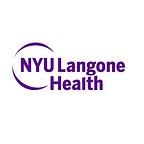Creating a Digital OR to Improve the Surgical and Patient Experience
Operating in one of the most digitally advanced health systems in the country, surgeons at NYU Langone Health have access to cutting-edge technology. When planning the Kimmel Pavilion in 2018, one of our newest inpatient facilities, we were tasked with reexamining how best to apply that technology in its operating rooms (ORs). Kimmel provided a clean-sheet opportunity to optimally integrate technology and workflows and to enhance the surgical experience for our surgeons, patients and care teams. But, how did we do it?
Before we began proposing solutions, we methodically defined opportunities for innovation and identified the best partners to help us realize them, including:
1. Enhanced Intraprocedural Visualization — The ability for anyone in the operating room to view any video source. We also wanted to create a patient-friendly view when walking in the digital OR to reduce anxiety.
2. Access to Patient Medical Record — The ability to easily pull up diagnostic images for perioperative planning, and during surgery for reference.
3. Video Capture — The ability to capture surgical and/or in-room video for quality control, documentation and teaching.
4. Collaboration — Enabling surgeons and support staff to easily collaborate with each other and observers during surgery, as well as to facilitate training across the health system.
Once we determined the most important elements, we marshalled support from health system leadership — all strong advocates of technology as a strategic asset. We then created a purpose-built digital OR mock-up to test different room setups and technology implementations to allow surgeons and staff to physically touch, feel and understand each option.
We worked with expert partners to help refine and validate our proposals, and to ensure the collection of the objective data our institution relies on. NYU Langone continually collects and evaluates data and metrics to see what is working well, so it was critical that we included hospital end user support teams to ensure that they understand the new technologies and will be able to provide support to our surgeons during their operations.
When Kimmel Pavilion opened in 2018, the digital ORs were enthusiastically received by surgeons and patients alike. The new technology improves patient experience by presenting music and relaxing scenic imagery of their choice before surgery, while surgeons can share video feeds from any of the devices in the digital OR to allow students and others to better understand the surgical proceedings. Enhancing users’ digital experience is a continuous process, and we are continuing to iteratively refine digital OR technologies, for example by introducing new integrations supporting pathology, and exploring new ways of enhancing the education of our medical students by establishing surgical video libraries.
Five years after Kimmel’s opening, we have built many more digital ORs and further refined what an integrated OR looks like. While a similar set of technology and tools goes into any new construction or renovation, the needs of surgeons may differ depending on their specialty or location. Standardizing the digital OR technology throughout our health system while keeping these differences in mind is a complex undertaking, and adding unnecessary technology would complicate rather than enhance a workflow. So, we methodically validate each proposed enhancement — usually at a single site — before implementing it system-wide.
To guide priorities in the rapidly evolving field of surgical digital technology and to better define what success looks like at NYU Langone, the Digital OR Committee was created in 2021. The committee’s role is to ensure clear goals and alignment between IT, surgeons and our technology partners, as well as determine how best to standardize digital OR technology across our health system. Apart from standardization, the Digital OR Committee spends a significant amount of time considering how to “future-proof” digital ORs and integrate emerging technology, such as robotics. The committee strives to predict what advanced technologies may be on the horizon and evaluate them prior to facility design and construction. Correctly anticipating future technological developments can help avert expensive future renovations. Technologies currently under evaluation include:
· Using VR goggles to reduce anxiety and provide pain relief to patients
· Integrating computer vision with the EHR to reduce administrative load and allow clinicians to focus on their clinical duties
· Using ambient video to improve communication with the OR team and the perioperative team
· Recording post-op conversations between surgeons and patients for patients or caregivers to reference at home
As the number one hospital in New York and the number three hospital in the nation, we understand that surgeons choose to work for us and patients trust us with their surgical care in part because of the way technology supports such high-quality and safe care. While other health systems have access to some of the same cutting-edge tools as we do, the way we integrate and standardize these systems is a powerful differentiator. It assures patients that they will receive the same level of surgical care anywhere in our network from doctors and other clinicians who are trained in the latest techniques. We look forward to continuing to find innovative ways to improve our digital ORs and maintain NYU Langone’s standing as the best place to receive care and practice surgery in the country.
Kathy Huang, MD, Surgical Director, Perioperative Services, NYU Langone Hospitals; Director, Endometriosis Program at NYU Langone Health; Clinical Associate Professor, Department of Obstetrics and Gynecology at NYU Grossman School of Medicine
Dana Ostrow, Senior Director of Imaging, MCIT Clinical Systems
